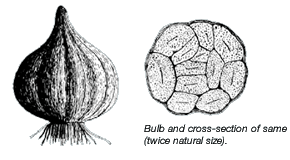Allicin is the major biologically active component of garlic. First reported by Cavallito and Bailey in 1944, allicin is the key ingredient responsible for the broad-spectrum of anti-bacterial activity in garlic. Research also showed that allicin is responsible for lipid-lowering, anti-blood coagulation, anti-hypertension, anti-cancer, antioxidant and anti-microbial effects.
Medicinal Activity in Garlic is best measured by it’s Allicin contentNonetheless, allicin is not found in fresh garlic. The chemistry of garlic is extremely complex. Fresh garlic contains an enzyme called “allinase” and “alliin”, which are contained in different parts of the garlic plant. This unique structure is designed as a defence mechanism against microbial pathogens of the soil. When fungi or other soil pathogens attack the cloves, the membrane of those compartments is destroyed, and within 10 seconds, all the alliin is converted into a new compound called allicin.
The allicin produced has a very short half-life (the time needed for one-half of a given amount of the component to deteriorate) and has a typical odour of freshly crushed garlic. This is a very efficient weapon because the clove’s defence systems only comes to life (activated) in a very small location and for a short period of time, whereas the rest of the allinase and alliin remain preserved in their respective compartments and are available for subsequent microbial attacks. More importantly, as a large amount of allicin generated could also be harmful for the plant tissues and enzymes, this very limited short-lived production that is confined to the area where the microbial attack takes place, minimizes self-damage to the plant.

